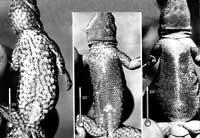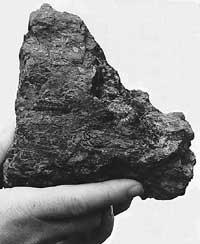Lizard and temperature
1997/07/01 Elhuyar Zientzia Iturria: Elhuyar aldizkaria
In the Arizona desert in North America, there is a species of lizard called Urosaurus ornatus, but it is not a common lizard. When the temperature increases, the skin color of the lizards changes. In the morning the skin color is light green, but when the temperature rises 303 centigrade it becomes turquoise blue. At the hottest hours, the color is cobalt blue.

American herpetologist Randall Morrison at Hood College in Maryland analyzes these small reptiles to understand the phenomenon. Skin color is altered by the reaction of local pigment cells to heat. These iridophobic cells grow and expand as temperature increases, varying the arrangement of local crystals. Consequently, the wavelength of light rays reflected by the skin changes to blue.
The lizard does not control this psychological and optical trait that makes it a living thermometer and generates energy expenditure. However, the lizard benefits from color changes. When the color is lighter, predators are harder to see and when it turns blue they stand out over females and despair competitors.

Gai honi buruzko eduki gehiago
Elhuyarrek garatutako teknologia





